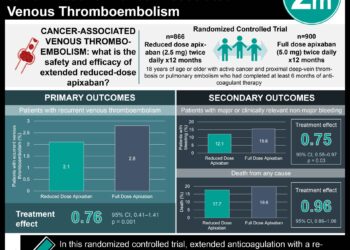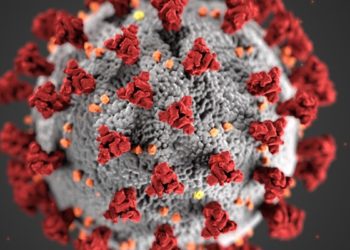Routine primary thromboprophylaxis with enoxaparin safe in children with COVID-19 or MIS-C
1. Routine use of prophylactic twice-daily enoxaparin demonstrated adequate safety in children with acute COVID-19 and multisystem inflammatory syndrome in children (MIS-C).
2. Target anti-Xa levels were generally achieved with a dose of 0.5 mg/kg for all ages.
Evidence Rating Level: 2 (Good)
Study Rundown: Most children infected with COVID-19 experience only mild illness; however, both acute COVID-19 and MIS-C can cause a pro-thrombotic state and are associated with an increased risk of hospital-acquired venous thromboembolism (HA-VTE). Despite recommendations for routine thromboprophylaxis for hospitalized adults with COVID-19, there is insufficient evidence to support thromboprophylaxis in the pediatric population. In this prospective, single-arm study that included 38 patients, researchers evaluated the safety of twice-daily enoxaparin for primary thromboprophylaxis in children hospitalized with COVID-19 or MIS-C to prevent HA-VTE within 30 days of hospital discharge. Overall, there was no clinically significant bleeding observed. 2 participants developed HA-VTE, and 1 death occurred due to underlying COVID-19 illness. Important limitations of this study include an open-label study design and small sample size. Nonetheless, this phase 2 trial is one of few available studies assessing the use of primary thromboprophylaxis in children and provides preliminary evidence that it is safe for use in children with prolonged hospital stay. Larger studies with a randomized, placebo-controlled design are required before routinely recommending the use of enoxaparin thromboprophylaxis in patients with COVID-19 and MIS-C.
Click here to read the article in PEDIATRICS
Relevant Reading: Incidence of venous thromboembolism and mortality in patients with initial presentation of COVID-19
In Depth [Prospective Cohort]: Researchers performed a phase 2, multi-center, prospective, single-arm clinical trial that included 38 patients. The study included data from 8 sites across United States. Of the 38 patients, 18 patients were diagnosed with primary COVID-19 and 20 patients were diagnosed with MIS-C. Patients received enoxaparin at starting doses of 0.5 mg/kg adjusted to achieve a 4-hour post-administration anti-Xa level between 0.20-0.49 U/mL. Of the 38 children enrolled, 35 (92.1%) achieved target anti-Xa levels and 28 (74.7%) did not require dose adjustments after the first administered dose. Median dose to achieve target anti-Xa levels was 0.5 mg/kg (0.48–0.54) and did not differ by age. However, levels of enoxaparin required to achieve target anti-Xa levels was higher in patients with MIS-C (0.52 [0.5–0.61] mg/kg) as compared with primary COVID-19 (0.48 [0.39–0.51] mg/kg, p=0.01). MIS-C patients were younger in age (p<0.001), had lower BMI (p=0.004), lower hemoglobin levels (p=0.002), and higher D-dimer levels (p=0.001). Additionally, they were more likely to received corticosteroids (p=0.04) and MIS-C (p<0.001). Primary COVID-19 patients were more likely to receive remdesivir (p<0.001).
Image: PD
©2022 2 Minute Medicine, Inc. All rights reserved. No works may be reproduced without expressed written consent from 2 Minute Medicine, Inc. Inquire about licensing here. No article should be construed as medical advice and is not intended as such by the authors or by 2 Minute Medicine, Inc.





![The ABCD2 score: Risk of stroke after Transient Ischemic Attack (TIA) [Classics Series]](https://www.2minutemedicine.com/wp-content/uploads/2013/05/web-cover-classics-with-logo-medicine-BW-small-jpg-75x75.jpg)

